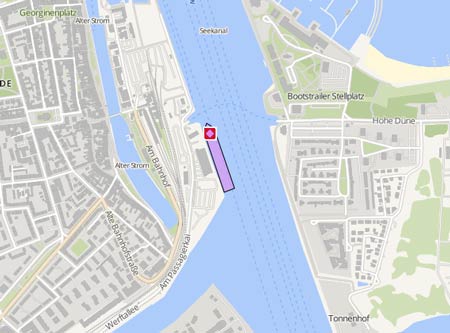CERES I
Kurs/Position
Die letzten Häfen
Die letzten Wegpunkte
Die neuesten Nachrichten
Several tankers and entities sanctioned
On Dec 3, 2024, the United States announced sanctions on 35 entities and vessels that have been involved in the transport of Iranian petroleum and derivatives to foreign markets. The reasons for this have been cited to be the Iranian attacks on Israel on Oct 1 as well as Iranian announcements of nuclear escalations. The goal of the sanctions has been stated to be hamstringing the Iranian nuclear program, the advancement of their drones and missiles, and their sponsoring of terrorist proxies by cutting off the funding from the sale of oil. A total of 35 entities and vessels have been targeted in this most recent move. 18 tankers have been sanctioned, being alleged to have shipped tens of millions of barrels of oil for Iran. In addition to these vessels, a number of entities that operate and manage these vessels, as well as those that facilitate the sale of Iranian oil, have also been sanctioned. The 'Rioo Napo' and 'Lara II' have been sanctioned as they are owned and managed by India-based Vision Ship Management LLP, which has been sanctioned itself. The RIO NAPO has also carried Iranian Naptha to the UAE in the past. The 'Tonil' has been known to skirt previous sanctions and transport millions of barrels of Iranian oil. The tanker is owned and managed by the sanctioned Ukrainian Lightship Management Ltd. Another sanctioned company, the Indian Tightship Shipping Management (OPC) Private Ltd,, is also known to be involved in the ship’s management.
Shadow tanker still being investigated after allision
The offloading of the naphtha cargo iof the 'Hafnia Nile' was underway. The investigation into the incident also continued being led by Malaysian authorities and monitored by Singapore as the flag state of the product tanker. A portion of the cargo which was owned by Cespa and bound for Japan was recoverable. The offloading was to be completed in the next few days with the support of the Malaysian authorities. An unnamed tanker has been positioned to receive the naphtha. The 'Hafnia Nile' was underway near the eastern side of the Singapore Strait when it made contact with the tanker 'Ceres I '. It was expected that the 'Hafnia Nile', after having completed the offloading, would be permitted to proceed to a shipyard for repairs. investigators continued to explore it as an allision in which the 'Hafnia Nile' struck the 'Ceres I', which was believed to be at anchor. Among the points to be investigated, however, was if the vessel was broadcasting an accurate AIS signal and was at anchor as alleged. The vessel was linked to the operations hiding Iranian oil and it was in a known area used for illicit ship-to-ship transfers. The vessel is also reported to have a history of falsifying its AIS signal location and going dark. The ownership also remained clouded with it being registered likely to a shell company in Hong Kong that has not provided statements since the incident.
Tanker did not flee, but was adrift after collision
After the 'Ceres I' collided with the 'Hafnia Nile' on July 19, the anchor chain of the tanker on the starboard side was cut off and subsequently caused the vessel to drift, according to the Director General of Malaysia's Marine Department Capt Mohamad Halim Ahmed at a press conference on July 30. The comments made by Director General contradicted previous statements made by the Malaysian Coast Guard that the 'Ceres I' had disappeared and fled the scene to be intercepted in the early hours of 21 July being towed by two tugs. It was reported at the time that the Ceres I had turned off its AIS transponder, however Capt Halim stated that it had communication and navigational issues. The 'Ceres I' was found 20 nautical miles from the collision site near the resort island of Tioman. It was not clear what happened to the two tugs previously reported to be towing the VLCC and arrested by the coastguard. Both the 'Ceres I' and the 'Hafnia Nile' were anchored in Malaysian waters. Based on preliminary investigations, the 'Ceres I' was anchored at the time of the collision due to technical problems. The 'Ceres I' is alleged to be a part of the dark fleet that trades sanctioned cargoes and was last reported carrying a cargo of Iranian crude oil in March. The vessel is operated by the little-known company Shanghai Prosperity Management.
News schreiben

